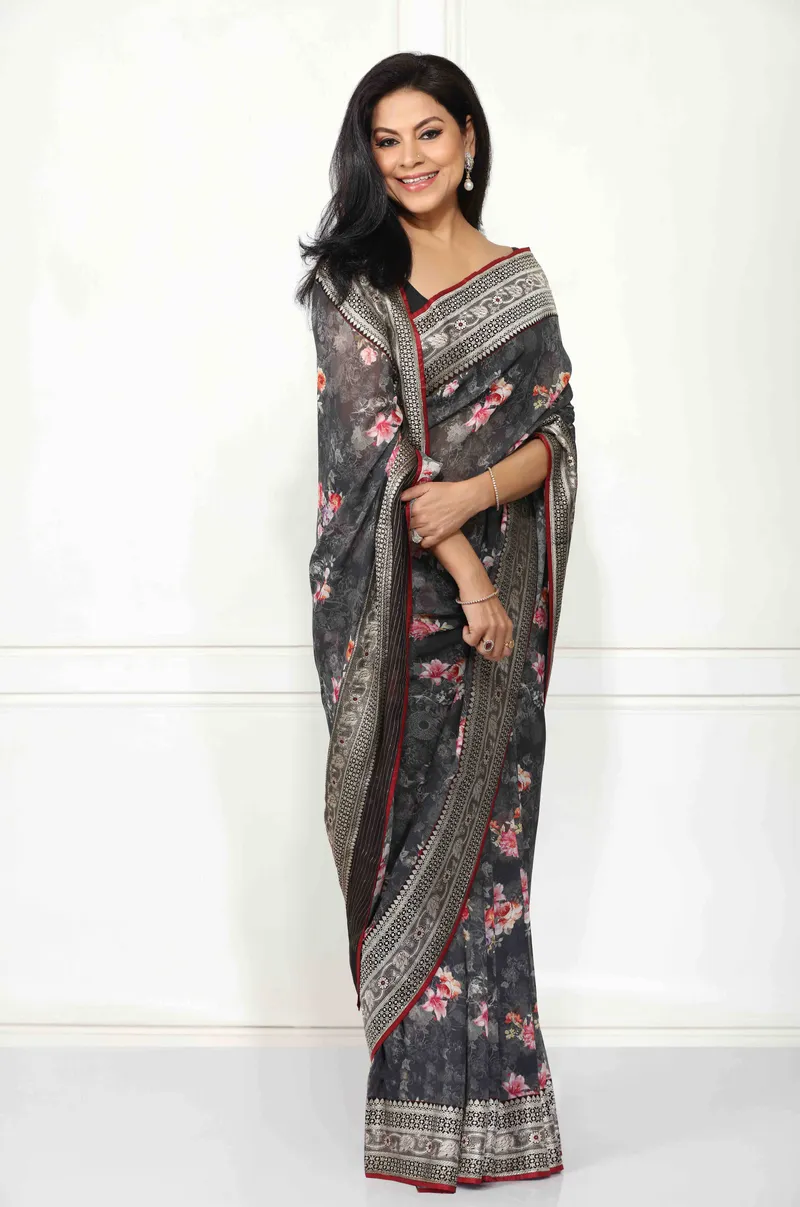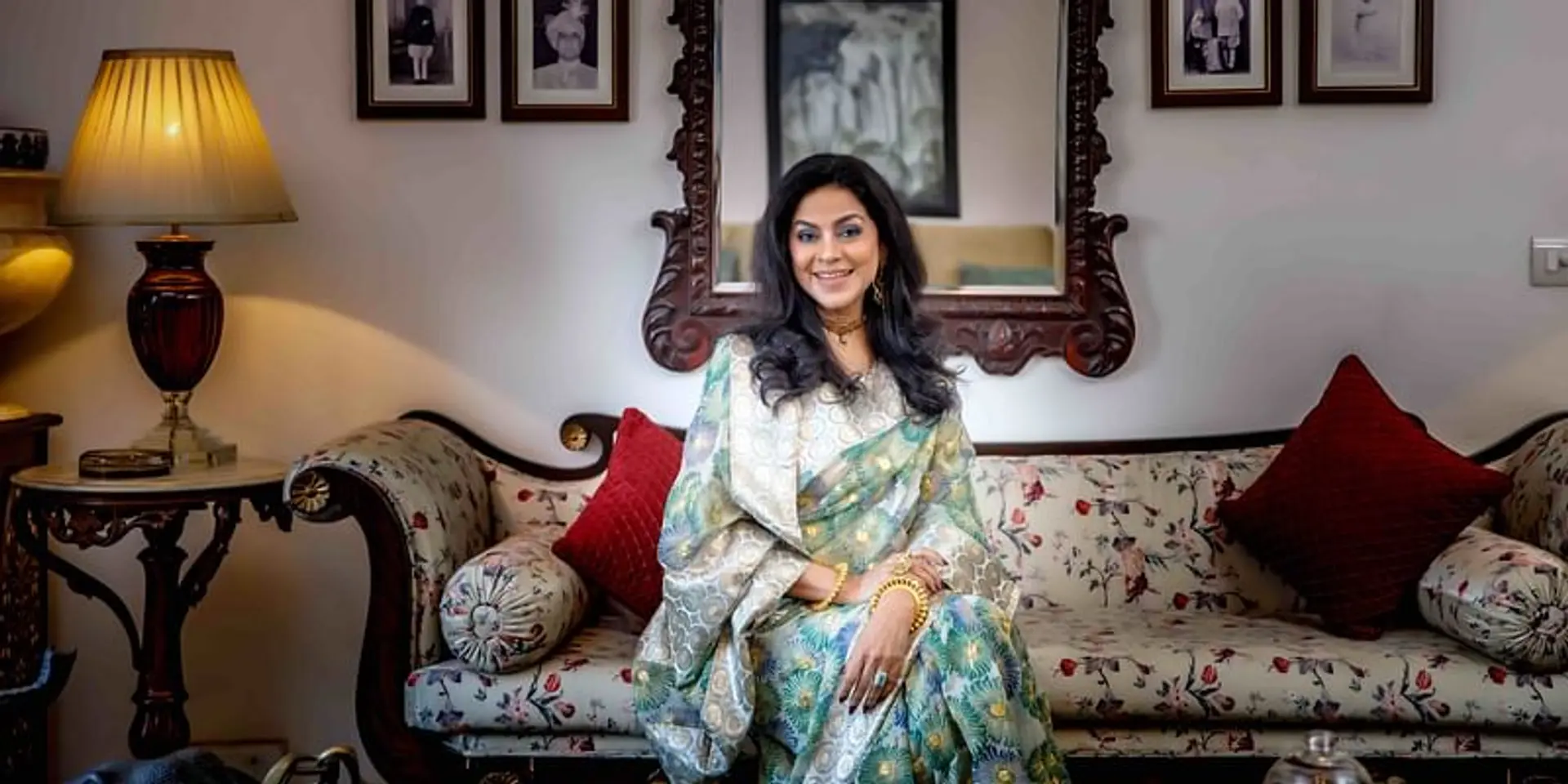Princess Diaries: How Archana Kumari Singh went from journalism and branding to entrepreneurship
Archana Kumari Singh, who belongs to an erstwhile royal family, talks about her journey to entrepreneurship and reveals why she decided to go ‘past forward’ with the House of Badnore.
When Archana Kumari Singh moved from her home town in Rajasthan to Delhi, she felt a sense of freedom and anonymity that was liberating. The daughter of late Raja Abhay Pratap Singh and late Rani Asha Devi, her home was always a fort in Pratapgarh.
“My earliest memory of home was one that was always bustling with people, residents, and guests; of delectable aromas and specialty cuisines tried regularly; of large spaces that gave us ample opportunity to hide and not be found; of so many pets, from tiger cubs to deers, monkeys, dogs and birds, all a source of great joy. Incidentally, when my mother married and came to Pratapgarh, she even brought along a pet bear,” Archana recalls.

Archana Kumari Singh
Archana says they grew up with a sense of decorum, discipline, and responsibility; imbibed kindness, compassion and generosity; and grew an appreciation for art, aesthetics, music, and poetry.
“Most, importantly we also imbibed the skills to fit in seamlessly in any environment.”
A different world
Growing up, she says they learnt new lessons watching her parents conduct themselves in public life.
“As the first family, they had to lead by example, be dependable, establish trust, and keep the family nucleus cohesive. A nucleus, which existed in many layers with the inner circle beginning with us, then the uncles and aunts, cousins, friends, relatives, and then stretched further to include the entire village. They were the warp and weft of the fabric of their immediate and extended family,” Archana says.
It was after she married in the erstwhile Mewar principality of Badnore, in Rajasthan, and moved to Delhi that Archana tried her hand at employment and entrepreneurship.
Having studied journalism, Archana decided to try freelance writing for several publications, and experiment with different genres of media.
“My beat was art, culture, travel, cuisine, and people. Once both my daughters were in early years of school, I plunged into a full-time role as the editor of a niche jewellery magazine, which was then the only consumer magazine on the subject,” she says.
Archana says those days were exciting days for print publications. But after close to 10 years s, she changed her career path and joined British silverware brand Frazer and Haws. She went on to hold the position of President, handling all operations and becoming the face of the brand in India.
Recollecting her employment experience, she says, “For 15 years, I learnt relentlessly on the job. I learnt all about luxury retail, product design and development, production, sales and marketing, people management, and also consumer psyche. Each day brought its own challenges and it was exhilarating to seize the opportunity to learn more and grow exponentially. Silver, by far is a difficult metal to work with, and watching design ideas from the drawing board to the finish line to client appreciation was a high that remained unparalleled,” she says.
After 15 years of retail exploration and erudition, Archana decided to embark on an all-new adventure. “I decided to become an entrepreneur,” she says.
The House of Badnore
Archana launched the House of Badnore, a multiproduct brand that offers a range of accessories for men, women, and home.
"We, as a family, have lived away from our ancestral home, Badnore in Rajasthan, because of our respective careers, which have defined our individual identities. We are a family of four professionals – my husband Ranjai Singh heads an American buying house in Delhi. My elder daughter, Anantika is Vice President HR, Citibank, in London, and Krittika is an art historian, currently working with the Museum of Art and Photography, Bengaluru. But though away, we are deeply connected to our roots. That is the reason I chose the brand name for my enterprise. It felt like homecoming,” she says.
Archana explains that the company offers unmatched design solutions for personal styling, accessories, jewellery, home, interiors, trousseau, gifting, and cuisine for momentous occasions, aiming to “recreate nostalgia with vintage stylishness”.
“We have created a plethora of designs in each category that are chic, elegant, and affordable. We bring in a hint of the vintage in contemporary stylisation so the accessories can fit in with any ensemble or home. What sets HOB’s merchandise apart is the fact that we do not replicate vintage; instead, we recreate around motifs and elements from the past and make them in vogue and relevant for modern times. The leitmotif for all our designs, including the packaging, is elegance,” explains Archana.
All HOB creations are exclusively designed and manufactured for the brand. It retails at two outlets –Vayu at Bikaner House in Delhi and Ananda at Rishikesh. The team currently is in the process of identifying a few more niche outlets in India and overseas for its “premium contemporary luxury products for gifting or personal use, at controlled price points”.
Archana’s first challenge was thinking through the product line. She says usually people restart what they have learnt but that was not an option for her.
“Having worked with a silver brand, it was a given for me to pick up on the same and launch my own silver line. But my ethics would not allow that. It was a huge dilemma and that’s when all the aesthetics that I had grown up with, came in use. I could create with ease several options of categories with metals and fabrics along with offerings of silver too,” Archana says.
House of Badnore offers a range of silks, cashmeres, pashminas, velvets, jewellery, and accessories made with vegan leather, jute, and upcycled PET yarn.

‘Princess wears Prada’
Archana says the excitement of creating is unending, and products and design come easy to her as do sales and marketing.
“The challenge was to create a virtual space for visibility and sales. I believe that luxury cannot be purchased without the touch-feel aspect. And, yet that is the need of the hour. Today, we get maximum traffic via our social media accounts. People are willing to buy from virtual platforms and we are constantly trying to reboot our attempts at the same to keep the audience engaged,” Archana says.
She explains that House of Badnore is a reflection of who the family truly is, with “sensibilities engrained in the past and the vision synced with current times”.
“The ethos of our collection is summed up as `Princess wears Prada!’ And flippant as it sounds, the line significantly conveys the changing times where princesses’ are no longer confined to their palaces or waiting to be served. They are instead travelling the world, chasing their dreams and passions, and adding more substance to their lives.
“They are truly global citizens and carry their roots wherever they go. That is the inspiration behind HOB and its product offering. We are Past Forward,” says Archana.
The plan was for HOB was to have an outlet of its own this year but the pandemic derailed that. Until the situation improves, the team will keep expanding their product line and layering categories with more products, designs and materials, techniques and skills.
Advising all women entrepreneurs, Archana says, “Women as entrepreneurs must work with their innate flair for multiple skills, natural ability to multitask, and allow themselves to be led by common sense, wisdom, and compassion, which is in the DNA of our gender.”
Edited by Teja Lele









